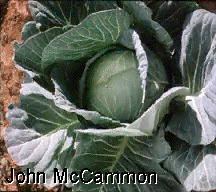
| |
 |
![]()
 Mother Earth News, Sep/Oct 1987
Mother Earth News, Sep/Oct 1987
The Easiest Seed-Saving Crops
By Nancy Bubel
Cabbage, cauliflower, Brussels sprouts, broccoli, collards, kohlrabi and kale cross with each other and with turnips, rutabagas, radishes and horseradish. (Chinese cabbage and mustard greens won't cross with their leaf- and heading-cabbage kin but in cross with each other and the root-crop crucifers.) You need to keep flowering seed crops 200 feet apart or, if space is limited, intersperse rows of sunflowers or other tall plants with the crucifer seed rows to deter pollinating insects. Remember, too, that most crucifer seeds stay viable for as long as five years under good storage conditions, so you can save seed of one or two varieties each year and keep rotating them.
Excepting broccoli (an annual), all crucifers are biennials - they have to make it through one winter before they'll produce seed. Kale and Brussels sprouts are the easiest biennial family members for seed saving, because these hardy plants can over winter in the garden even in cold areas. They'll then send up their seed stalks the following spring. Most of the other biennials need to be dug up - roots and all - stored in a root cellar and planted out again the following spring. (In some regions, you may be able to over winter them under mulch or in covered trenches.) Many growers make an inch-deep vertical cut in replanted cabbage heads to help free the plant's growing point. The tall seed stalks that emerge sometimes need to be staked to prevent breaking.
Probably the trickiest member of this family to save seed from is cauliflower, because it doesn't keep well either in the ground or in root cellars. Often the best way to treat it is to start plants in early fall and over winter them in a cold frame.
The Arc Institute
Two crops [of Broccoli] per year can be planted, early spring and mid-summer. Plant 1/4” deep, 18” apart, in rows 2 1/2’ apart. Harvesting for food, pick the heads before the tiny buds open into yellow flowers. Cabbage worms and root maggots can be a problem.
Cabbage can take cold weather, and two crops can be harvested per year. The later crop can be stored in a cool cellar and will last through the winter. Plant 1/2” deep, rows 2 1/2’ apart, and depending upon type, place plants in rows 12” to 2 1/2’ apart. Seedlings can be started early and then transplanted. Do not over water when heads are firm or they may split open.